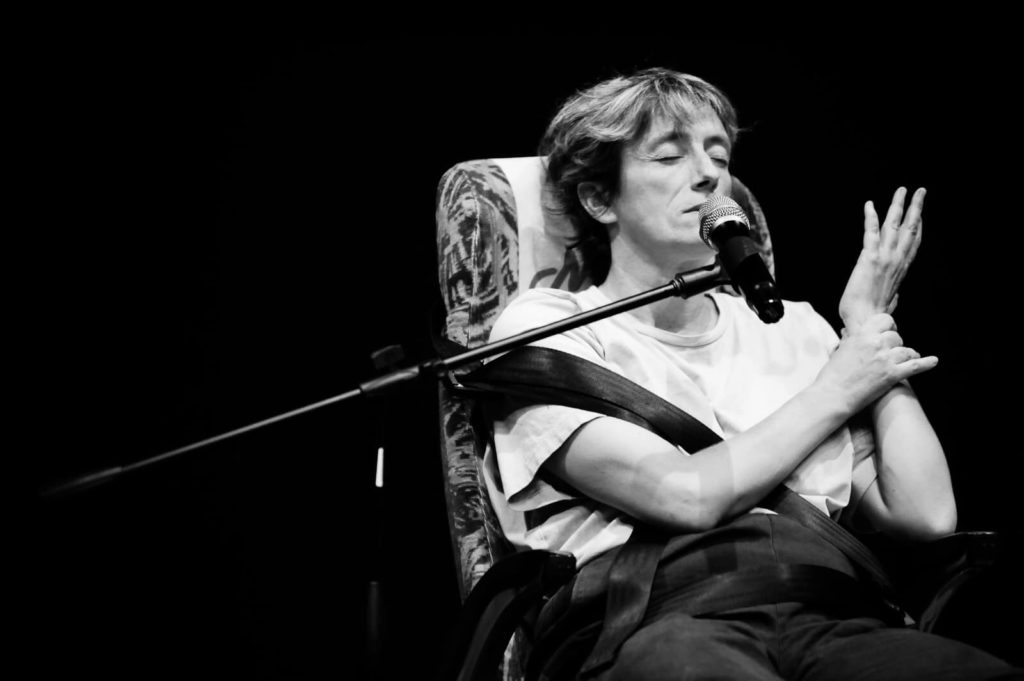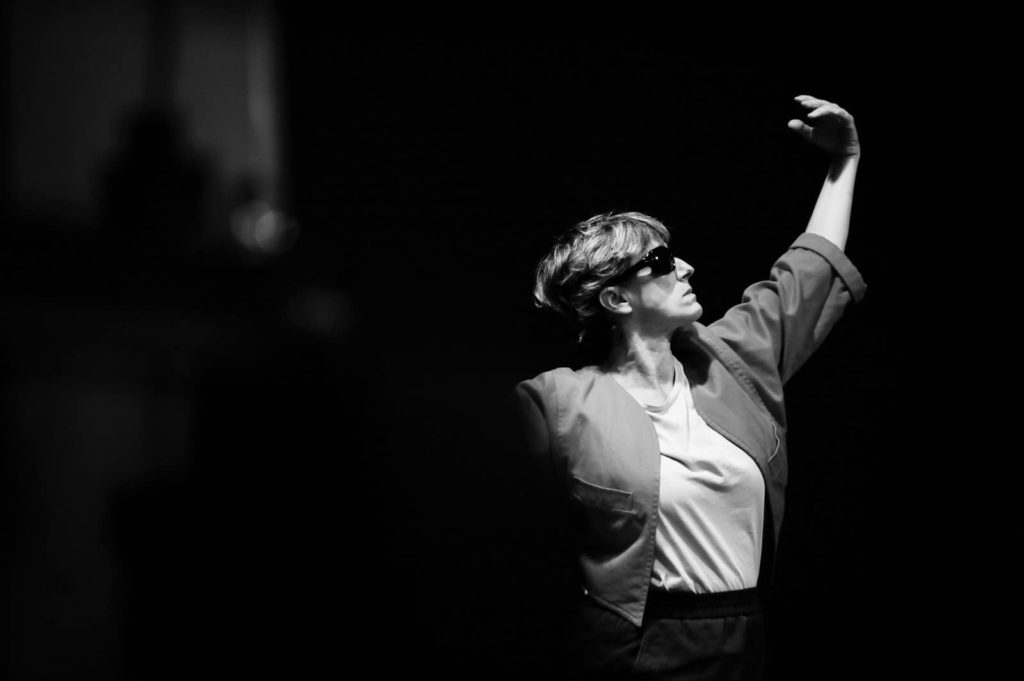pbCITEMOR2022 | Sofía Asencio’s NOCHE CAÑON
14th August 2022NOCHE CAÑON
Sofía Asencio
This text is part of various reflections from our residency at CITEMOR festival – to read more writings and reflections, including an introduction to the festival and our residency there, see here.
***
17:00, Montemor, Portugal, during the festival’s traditional Sunday Sardinhada (sardine feast!) gathering between Marinheiro tasca and the Mondego river
Eating: vast amounts of sardinhas
Drinking: vast amounts of minis (small cervejas)
🥬+ 💺+ 🌌+ 💥
It feels like “experimental” live art spaces look down on stand-up comedyfor using tools that are too “pedestrian”, or tools that are not perceived to be ‘intellectual’ approaches to performative forms.
In Noche Cañón, Sofía works in collaboration with Beatriz Lobo, Jorge Nieto, and Tomàs Aragay to find their own way to generate text within the comedic monologue genre and bring traditional comedy traits to the Montemor-o-Velho’s old and decadent small stage.

What felt like the riskiest part of the show was that the audience was made up of people who spoke Portuguese, Spanish, and other languages as well as hosting a diverse range of ages and cultural backgrounds. So much of performance and comedy can be contextual (even some widely shared codes change depending on where you are), however, what became clear in Noche Cañon was that other codes are shared:
A lettuce on your head will always be funny.
Things going wrong live on stage will always be funny.
A picture of a flacid penis will stir a juvenile urge to laugh.
Surprises make you wonder.
There are shared codes of what activates a relationship between audience and performer that we can use as a framework and it is this framework that Sofía and her collaborators use to structure a piece that is trying to work within these constraints, whilst still also being a contemporary performance and a space for poetry and critical thinking.
Why don’t we make use of these pre-made codes more?
Why do we feel like we have to re-invent a language every time we make new work?
What might be gained from using a pre-made performative structure, and working within its constraints?
Speaking with Sofía, Tomàs and Jorge over delicious sardinhas the day after the show, we debate how perceived ‘high and low’ performance forms constrain the answers to these questions. On stage, through this work, the team asks: How do you speak to both contemporary/ experimental spaces, as well as speaking to spaces that cater to more commonly held performance codes (like comedy) without having to sacrifice either?
Thinking further on this we realise that this also touches on what is perceived to be cutre or tacky (a word which came up a lot when talking to Sofía and her team) and the contemporary sphere’s adversity to seeming too “low brow”, , which in turn is linked to the cultural sectors’ in-built classism and gate-keeping of what is considered ‘good’ and ‘bad’ art. The work of deconstructing these hierarchies is important in also deconstructing the power structures built into who is able to produce art, control narratives, and hold power.
Plus, we’ve been asking ourselves, isn’t “tackiness” a form of joy? (ノ◕ヮ◕)ノ*:・゚✧

Comedy is, for better or worse, a shared language between artist and audience, and Noche Cañon starts there. It doesn’t propose to introduce new codes or scores for us to follow, but instead produces an almost open-source and familiar score that allows us to follow the piece and activates our participation, at Sofía’s command. This score is underlined with a familiar yet provocative language that is simple, clear and inviting to the naked ear. Sure, some Spanish sentences don’t land on everyone’s perceptions but the language and the modes of performance here are never too demanding or complicated, allowing for a rare accessibility and proximity across contextual borders. `
Speaking to Sofía after another delicious sardine, she demarked herself from the type of theatrical participation that is too demanding, too complicated, which denies the agency of the audience and pretends that “they can do anything”, for it detaches the artist from their responsibility in the room.
There is a text in the show that verges on the poetic and is a reflection of the word ‘mediocre’, this text comes from a previous experimentation as a part of Sofía and Tomàs’ project ‘El Desenterrador’/ ‘The Excavator’ which is a method created to excavate the meaning of words with the body. This is a tool that they have made available publicly and again, plays with the notion of creation within shared codes. They have made this available on their site here.
This makes us think of the Forest Fringe project Paper Stages (Live Art Development Agency, 2013), which creates open-source material to make performances in the form of a publication.
It’s nice to find an art practice that works in such a public way to create tools for others – it is equally about the end product as it is about the method, thus opening the work to a more commons-based approach away from an individualised or protectionist ways of making art.
everything for everyone (☭ ͜ʖ ☭)
Xavi & Anahí
For more information on Sofía Asencio’s work:
Instagram: @asenciosofiayo